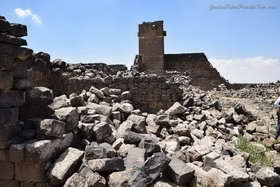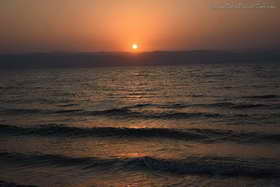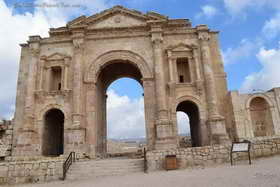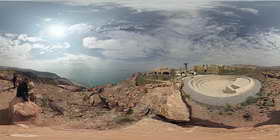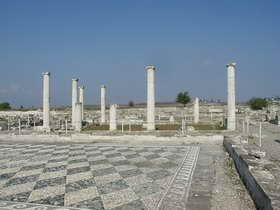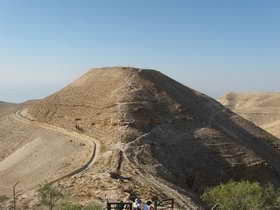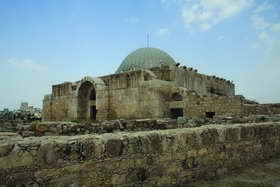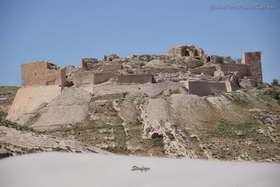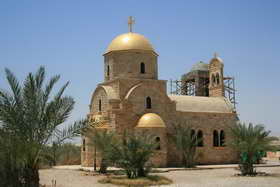The Nabataeans were people of surprises. Not only did they create the amazing city of Petra, they built the northern city of Umm al-Jimal. Using the local rough black basalt instead of the soft rose sandstone of Wadi Musa, they created an eerie black city whose name, "Mother of Camels," indicates its function as a trading town, as it had precisely what caravans needed:
Wadi Rum also known as The Valley of the Moon is a valley cut into the sandstone and granite rock in southern Jordan 60 km to the east of Aqaba; it is the largest wadi in Jordan.
